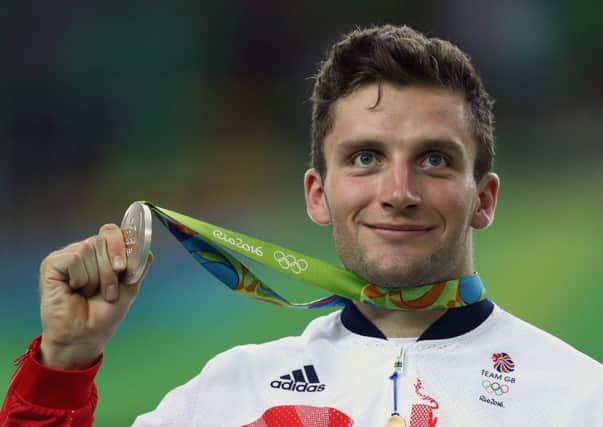Callum Skinner is right to consider himself more than an athlete


Skinner couldn’t have imagined then that his career would outlast the Edinburgh track, which was demolished last year. Having salvaged some of the old Meadowbank boards, he made a dining table that sits in his mother’s house in Edinburgh. It is almost as prized a memento as the Olympic medals and his final major medal, a bronze from last year’s Commonwealth Games on the Gold Coast.
“Cycling has been very good to me,” said Skinner. “I’ve made lifelong friends and realised my dream. I appreciate that 26 might seem to many quite young to be transitioning away from the track, but I have never considered myself just an athlete; I consider myself far more than that.”
Advertisement
Hide AdAdvertisement
Hide AdSkinner has not competed since the Commonwealth Games, citing “deteriorating health” as the reason for his extended absence, which saw him miss last weekend’s world championships. It has, he added, been “a very challenging time. Through seeking help outside the [British Cycling] programme, and by the unswerving support of my friends, family and agent, I have made incredible progress and I’m pleased to say have almost fully recovered.”
He is not wrong to consider himself far more than an athlete. Since Rio he has established himself as an accomplished and powerful speaker and campaigner. Two weeks ago he helped launch Global Athlete, an athlete-led movement to tackle and try to reform issues including welfare, governance and anti-doping.
The catalyst for Skinner’s move into sports politics and advocacy was an episode during the Rio Games when he found his image being used, without his permission, in a Leave.EU promotional video. In making his objections clear he found his voice and began speaking out about other issues close to his heart, including LGBT rights and the World Anti-Doping Agency’s response to Russia’s systematic doping.
This stood him in good stead when, following Rio, the Fancy Bears broke into WADA’s records and Skinner’s name was among those the Russian hackers released of athletes who’d applied for therapeutic use exemptions (TUEs). In Skinner’s case they were for asthma medication. His response was to request all his NHS medical records. These showed that he was diagnosed when he was five and hospitalised three times with asthma attacks. Writing in The Scotsman, he explained: “I was keen to make my records public for two reasons: to prove that my condition is real, but also to show that asthma need not stop somebody competing at the highest level.”
If it seems that Skinner the campaigner has already superseded Skinner the sportsman it is only because he has been so polished in his new role. But the sporting achievements gave him the platform, and shouldn’t be overlooked.
Having been burdened with the “next Chris Hoy” tag almost from the moment he began competing, it seemed unlikely that Skinner would ever emerge from the six-time Olympic gold medallist’s shadow – but in Rio, against the odds, he did, becoming a gold medallist at 23 (Hoy was 28 when he won his first in Athens).
Riding the same event as Hoy, the team sprint, and in the same position, man three, Skinner actually went faster than Hoy, pictured. It was testament to his talent and determination, but also his courage in sticking to the task when it looked beyond him.
Five months before Rio, at the world championships in London, Skinner struggled to hold on to his team-mates, Philip Hindes and Jason Kenny. It was a particularly public failure, not helped by some insensitive remarks from Shane Sutton, then the head coach.
Advertisement
Hide AdAdvertisement
Hide AdThe pressure on him was immense, but Skinner was focused and determined. In London, as the crowd drifted away, he sat in the track centre absorbing the disappointment and reflecting on the challenge that lay ahead. He was asked whether it would make sense for Hindes and Kenny to check their acceleration – in effect, to slow down, so that Skinner wasn’t off the back, engaged in a hopeless pursuit. “No, absolutely not,” said Skinner. “We spend all our time trying to go as fast as we can. It’s up to me to go faster, it’s not up to them to hold back.”
Over the next few months he worked hard and managed to close the gap to the other two, so that in Rio he was a vital member of the team rather than the weak link.
“His performance in Rio was huge,” says Graeme Herd, the former national coach. “Being man three is physically and technically very demanding, especially riding three rounds in one day. And in the final, coming into the last lap they were virtually dead level – there was nothing in it. It was a monumental ride by Callum to bring it home.”